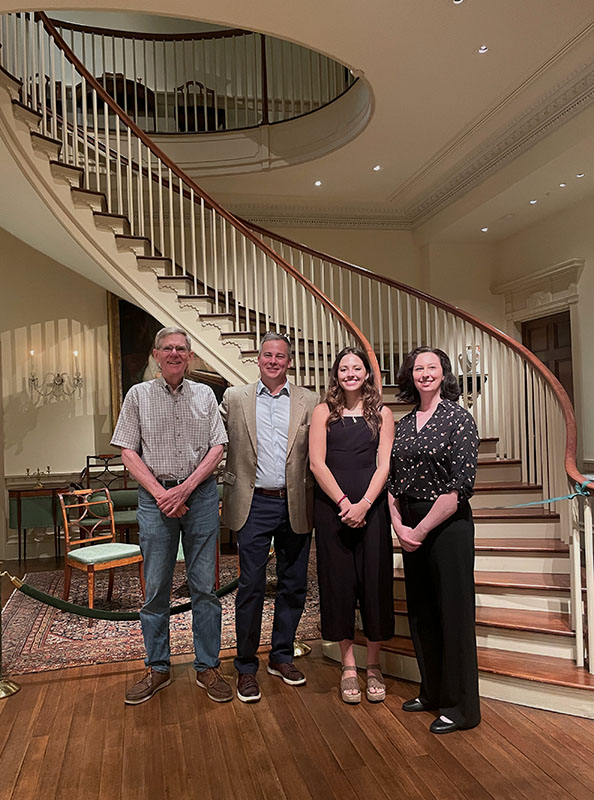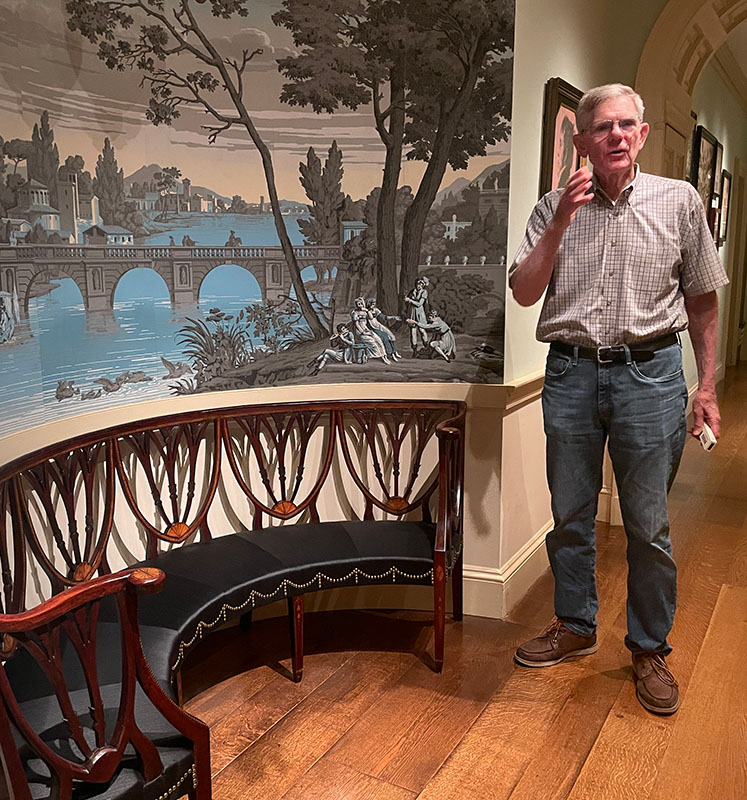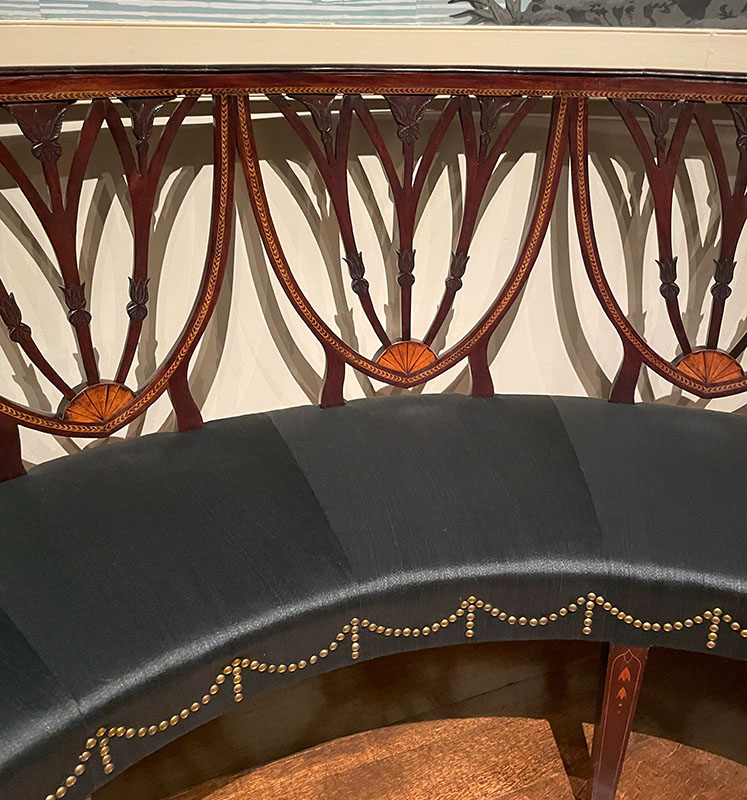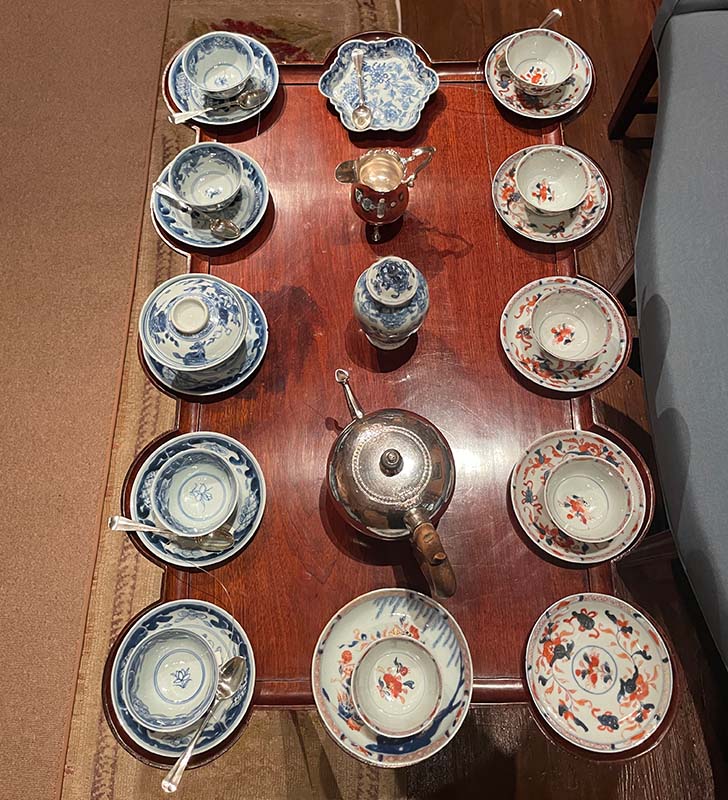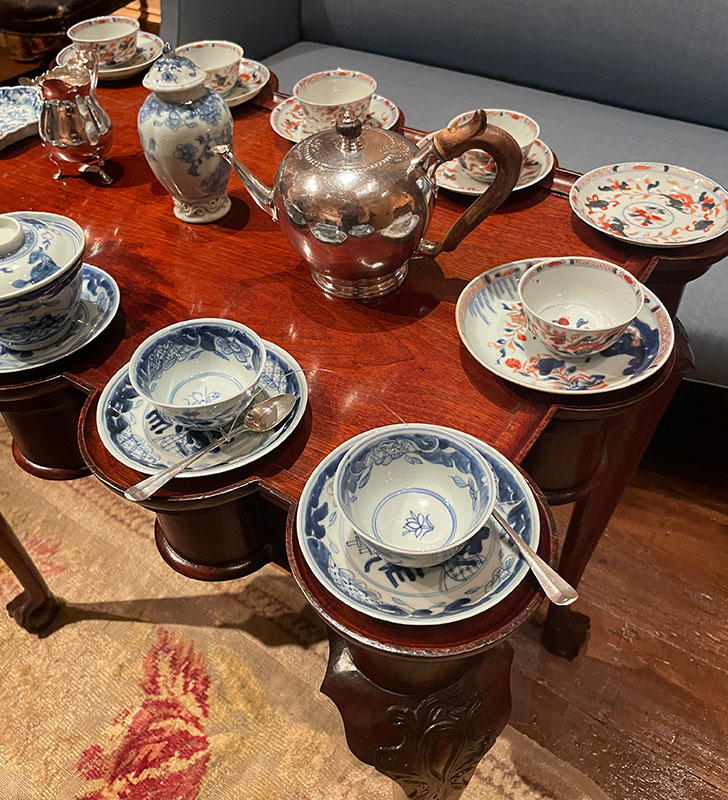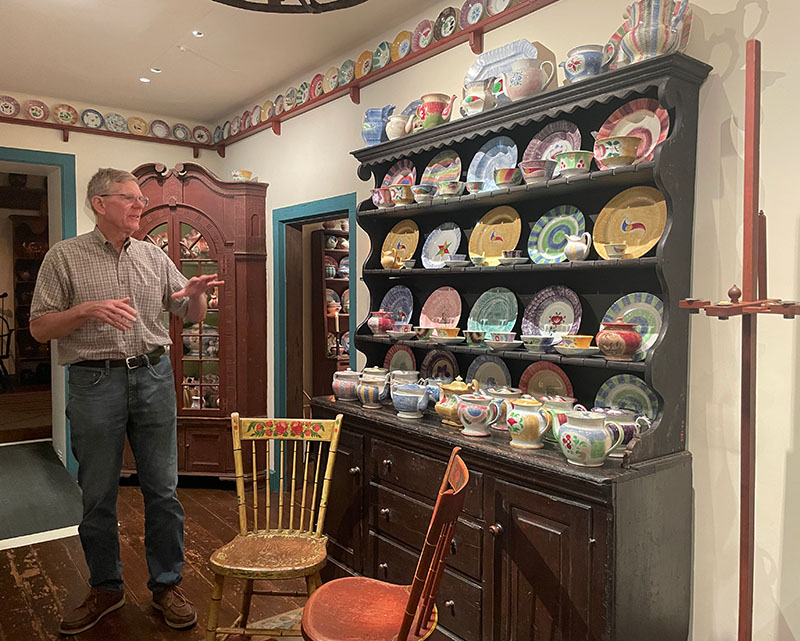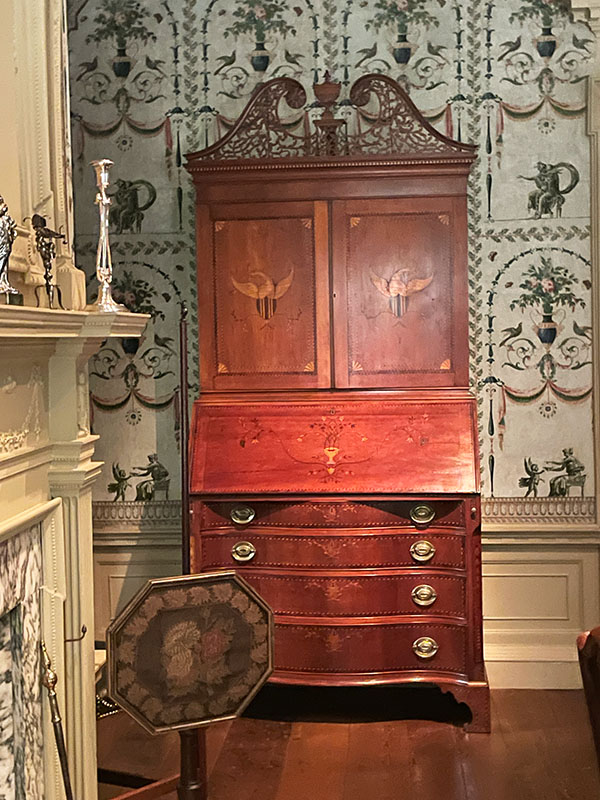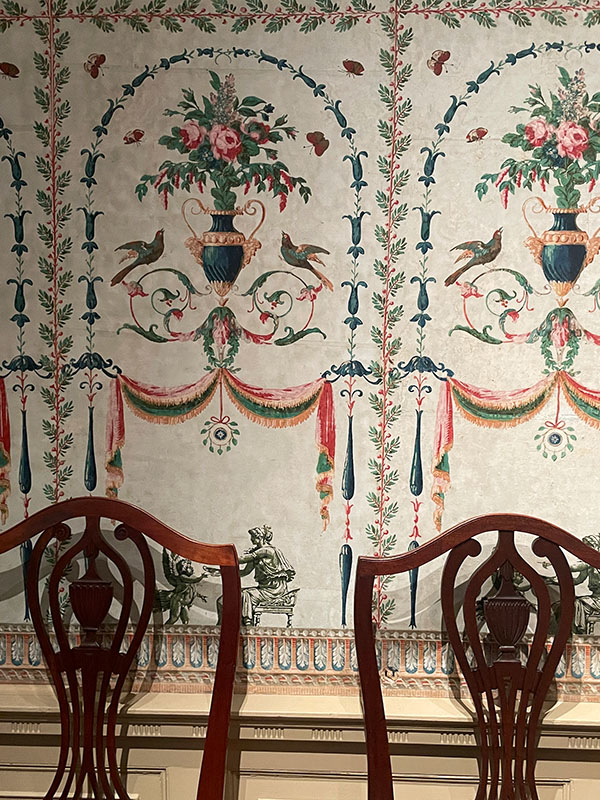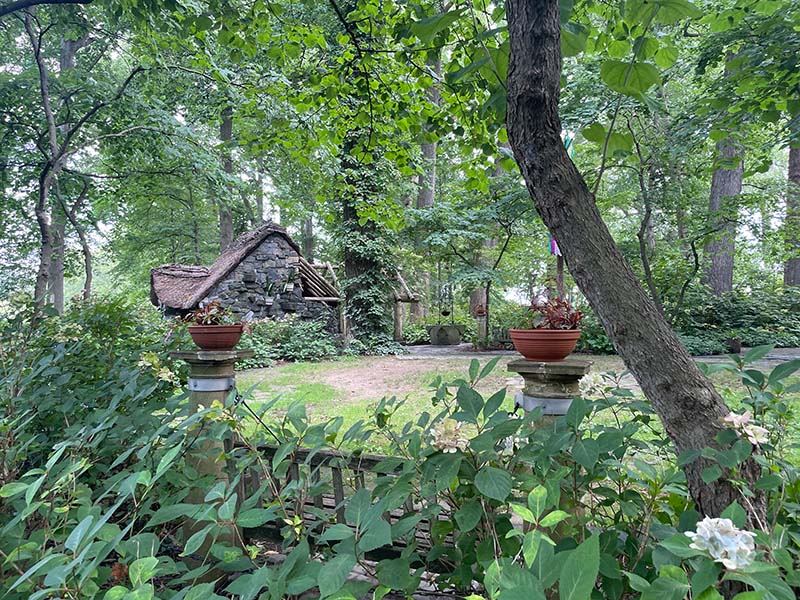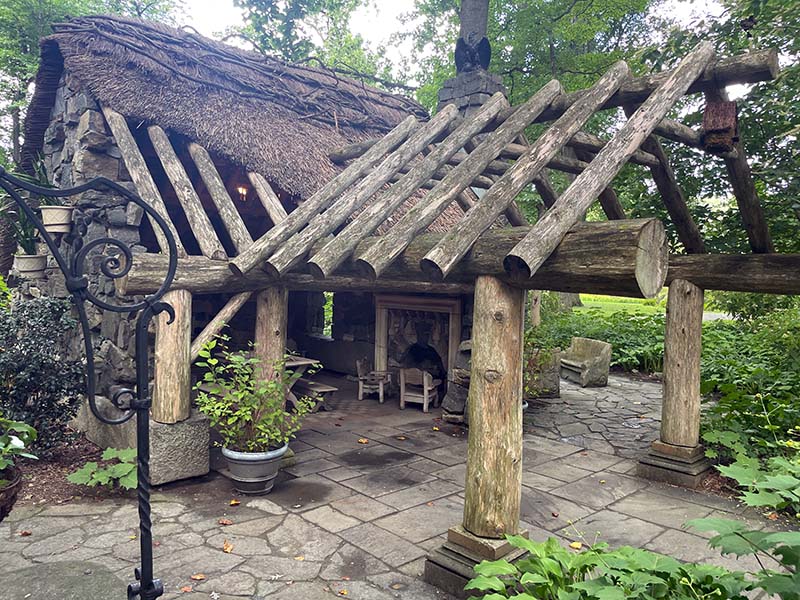Enchanting and Informative: A Visit to Winterthur with Brock Jobe
by Alexis Dempsey
Winterthur Museum, Garden & Library, unlike other private estates-turned-museums in Delaware, features an unusual dollhouse-like layout that leaves visitors overwhelmed, yet captivated. Henry Francis du Pont, who inherited the property in 1927, was devoted to creating individual “period rooms” throughout the house as a way to display the many American decorative arts he collected. The scale and detail of H.F.’s design resulted in “an underlying structure for a site that can seem baffling and bewildering,” according to Brock Jobe, President of the Decorative Arts Trust’s Board of Trustees and Professor of American Decorative Arts Emeritus at Winterthur. In spite of this challenge, du Pont’s vision has come to fruition in a way that captures the whimsy and uniqueness of the estate’s decorative arts collection.
In July 2023, Brock Jobe welcomed me and a small group of Trust employees for an in-depth tour of Winterthur. Despite being a Delaware resident for all 21 years of my existence, this was my first ever trip to Winterthur and, I must say, the experience did not disappoint. The Trust group explored the vast history of the estate as well as its extraordinary collection of decorative arts.
Matthew Thurlow, Executive Director of the Trust, accompanied us on the visit. He previously worked in Winterthur’s development department and also graduated from the University of Delaware’s Winterthur Program in American Material Culture.
Although the Winterthur story extends back to 1839, H.F. was the main highlight of the tour. He made major changes to the estate during the 1920s and 30s, dramatically expanded the size of the house, and then turned it into an exhibit hall where guests were welcomed for weekend visits. Brock described how H.F. would throw dinner parties and then immediately run a tour following the meal. In order to make sure the house was in perfect condition, he would send staff to restore guest rooms to their mint condition during dinner. Promptly after the end of the tour, the rooms would be returned to the state that the guests had left them in pre-dinner.
In fact, H.F. was so committed to making Winterthur appear as if no one actually lived there that he removed all service spaces (kitchens, closets, bathrooms, etc.) before it opened to the public as a museum in 1951.
Brock led the group through a labyrinth of rooms containing spectacular decorative arts, noting a few of his personal favorites along the way.
The first of these was a curved federal settee from Portsmouth, NH, that dates to c. 1799. Made of mahogany, birch, ebony, soft maple, and eastern white pine, and covered with horse hair, this piece is truly breathtaking. The blue satin seat cover beautifully complements the color of the mahogany frame. To accommodate the shape of the settee, H.F. customized a wall at Winterthur.
Next up was a tea table made c. 1745 in Boston, MA. This mahogany table was a standout piece on the tour. It features a turret top to perfectly fit a tea set, specifically one of Chinese porcelain that was owned by the couple who commissioned the table, William and Sarah Server.
While trekking to the final favorite item, Brock led the group through a stunning sequence of rooms with walls lined from top to bottom with ceramics and other incredible items in H.F.’s expansive collection.
Now found in a room that is not accessible to the public, Brock’s favorite desk and bookcase can be found surrounded by intricately detailed wallpaper and an ornate fireplace. The desk and bookcase, dating back to c. 1798, is composed of cherry, mahogany, basswood, white pine, and brass. Made by Nathan Lumbard of Sturbridge, MA, the wood’s rich color serves as a stand out feature in the vividly ornamented room in which it resides.
Following lunch, a golf cart was pulled around to kick off the garden tour.
Winterthur’s 60-acre garden is not a run-of-the-mill experience. Unlike more formal gardens open for tours, Winterthur does not have a wide expanse of flowers arranged into intricate designs. Although meticulously tended, the grounds represent another example of H.F.’s interest in color and design and embodies a type of naturalistic garden. The plantings were curated so that, no matter the time of year, the gardens have sections in bloom.
One of the standout areas of the gardens, albeit a much more recent addition, was the Enchanted Woods. This adorable fairy land is full of tiny chairs and tea tables, messages from fairies, and a charming fairy cottage. Not only does the secluded fantasy land serve as a fun and enchanting area for children, it also provides adults with the opportunity to experience a child-like wonder and excitement that can only be created through fairy tales.
Winterthur serves as a wonderful resource near the University of Delaware main campus for students interested in the decorative arts or horticulture. The estate is a true shining star of Delaware.
This outstanding day full of an expansive decorative arts collection and stunning garden tour has the Trust thrilled and full of anticipation for a visit to Winterthur during our Spring Symposium in late April 2025!
A huge thank you to Brock Jobe and everyone at Winterthur who made this visit possible!
Alexis Dempsey is the summer 2023 Communications Intern at the Decorative Arts Trust. She is studying English at the University of Delaware.
About The Decorative Arts Trust Bulletin
Formerly known as the "blog,” the Bulletin features new research and scholarship, travelogues, book reviews, and museum and gallery exhibitions. The Bulletin complements The Magazine of the Decorative Arts Trust, our biannual members publication.
Click Images to Enlarge
Did you know that clicking on the images in Bulletin posts will allow you to get a closer look? Simply click on an image, and a larger version will open in a pop-up window.








